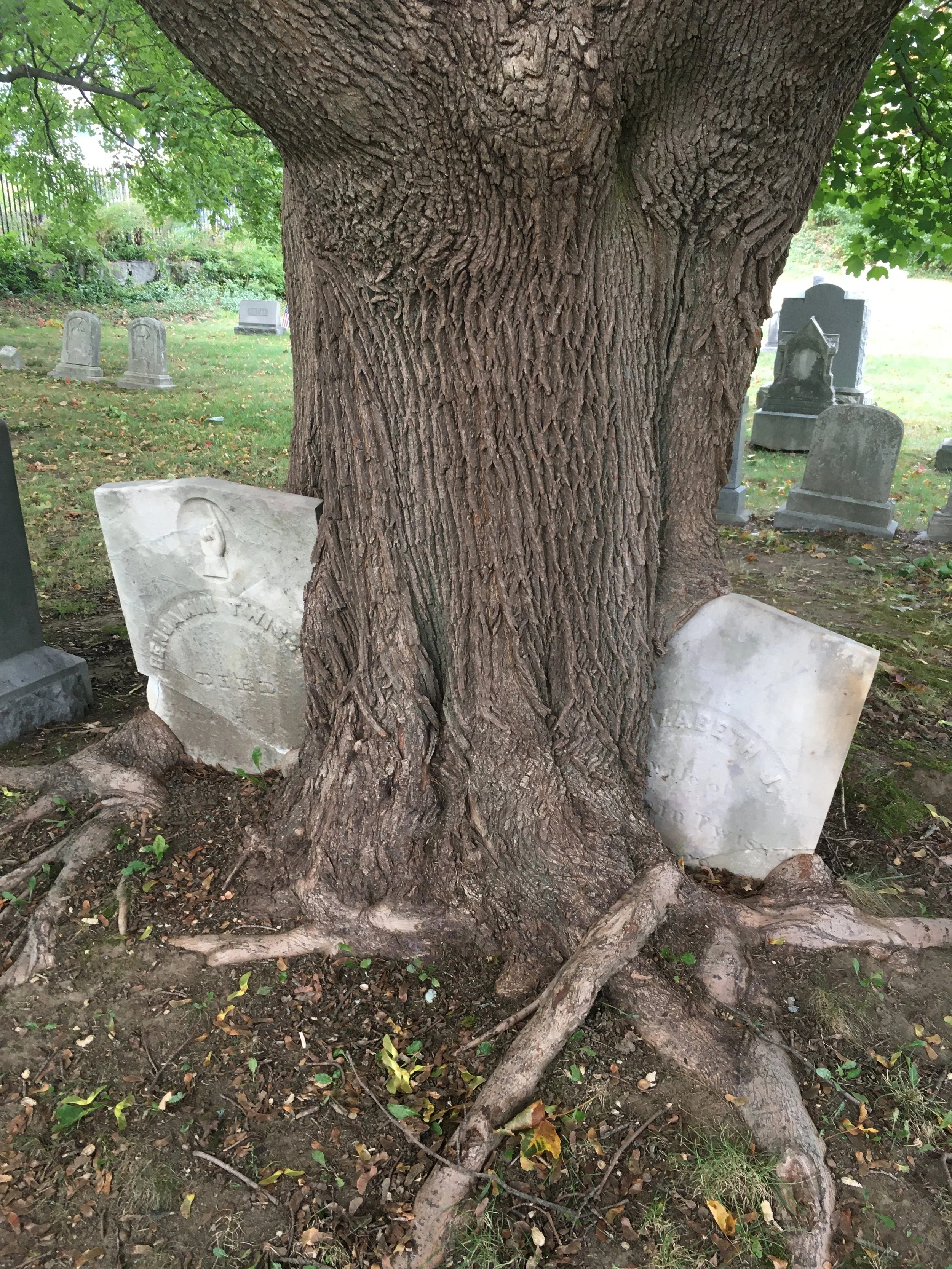Being Present with Declarative Language
One of my favorite things about declarative language is how it helps me be present in the moment. Amid busy schedules, distractions and competing demands, declarative language is grounding. It helps us practice being fully present to others, and helps kids store socially meaningful memories as a result.
This past week, Charlie, Kim, and I met at a local cemetery on a rainy day for a socially distanced visit. (Hoping you remember Charlie by now from previous posts!). As we walked together with no endpoint in mind, we practiced being present to each other and our surroundings in the following ways: We felt awe for the lives that had passed long before we were born.
We found delight and wonder in the unexpected growth of a tree. We discovered how local street names belonged to people buried among us.
We hoped for a rainbow. And we laughed as Kim used a British accent to join Charlie in imagining that trees were level crossings, one of his focused interests.
To give you a glimpse into how declarative language helped us embrace tiny moments of joy that day, here are some examples of what we said:
• I hope we see a rainbow!
• Wow! That person died a 𝑟𝑒𝑎𝑙𝑙𝑦 long time ago!
• Wait a minute… I know where that street is.
• Check out those headstones! I’ve never seen anything like that before.
• I don’t mind the rain.
• I wonder which way we should go next.
• Charlie, that's so interesting how trees make you think of level crossings!
• I just love your imagination.
• I’m enjoying being with you right now.
Slowing down to enjoy moments such as these, helps me remember that being together, no matter what we are doing, is what's important. And because we used a lot of declarative language, I know Charlie will remember this too.



